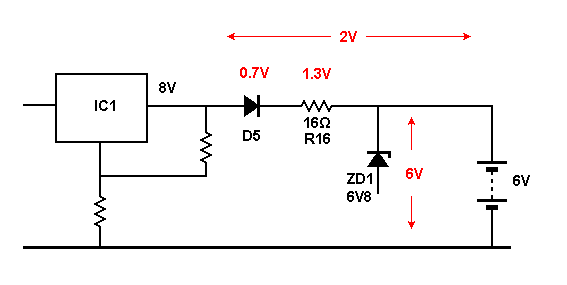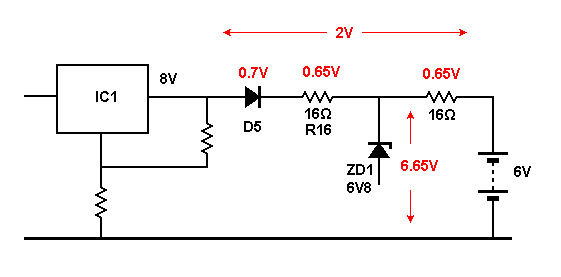Rabiuls
Junior Member level 1

I found this circuit on the web. Many web pages have this circuit. Google for EMERGENCY LIGHT schematic - Google Search and you will find it. Anyway, the circuit is given bellow:

This is mentioned that the circuit will protect the battery from overcharging as - "... When the battery gets charged to 6.8V, zener diode ZD1 conducts and charging current from regulator IC1 finds a path through transistor T1 to ground and it stops charging of the battery."
I think even if the battery voltage is bellow 6.8, ZD1 gets minimum 6.8v from the IC1 through D5. So, the said ZD1 conducts if there is output from IC1 and battery voltage does not matter at all in stopping the overcharging.
Am I wrong or missing something?
Thanks a lot.

This is mentioned that the circuit will protect the battery from overcharging as - "... When the battery gets charged to 6.8V, zener diode ZD1 conducts and charging current from regulator IC1 finds a path through transistor T1 to ground and it stops charging of the battery."
I think even if the battery voltage is bellow 6.8, ZD1 gets minimum 6.8v from the IC1 through D5. So, the said ZD1 conducts if there is output from IC1 and battery voltage does not matter at all in stopping the overcharging.
Am I wrong or missing something?
Thanks a lot.







